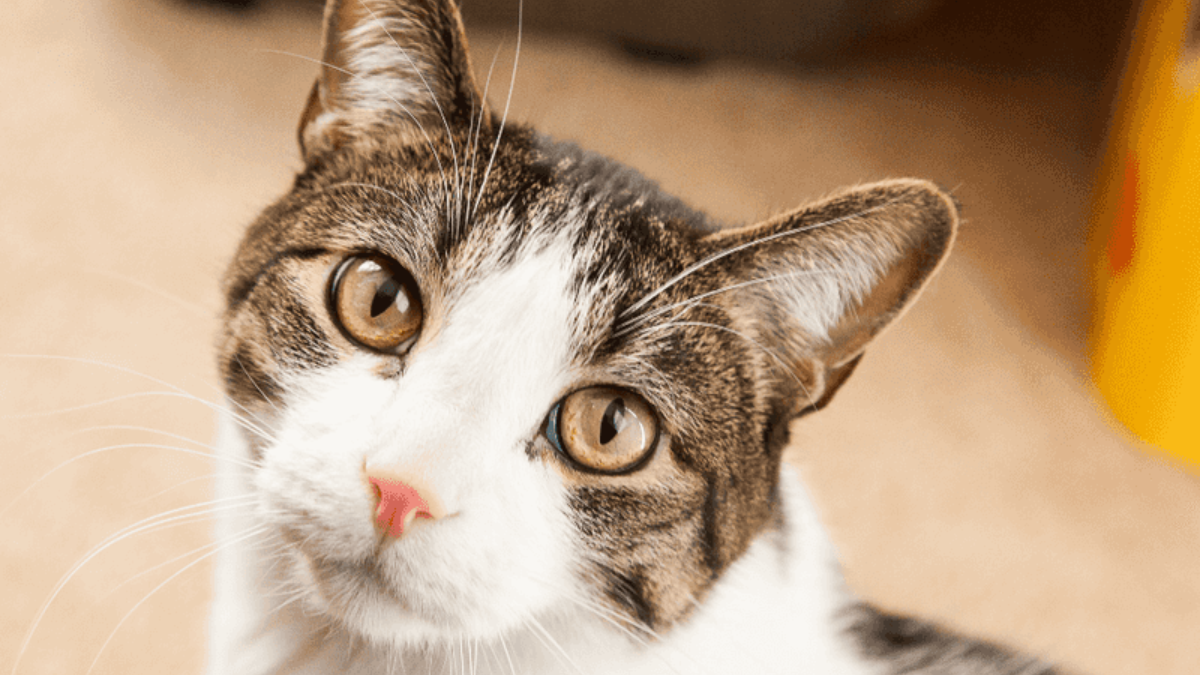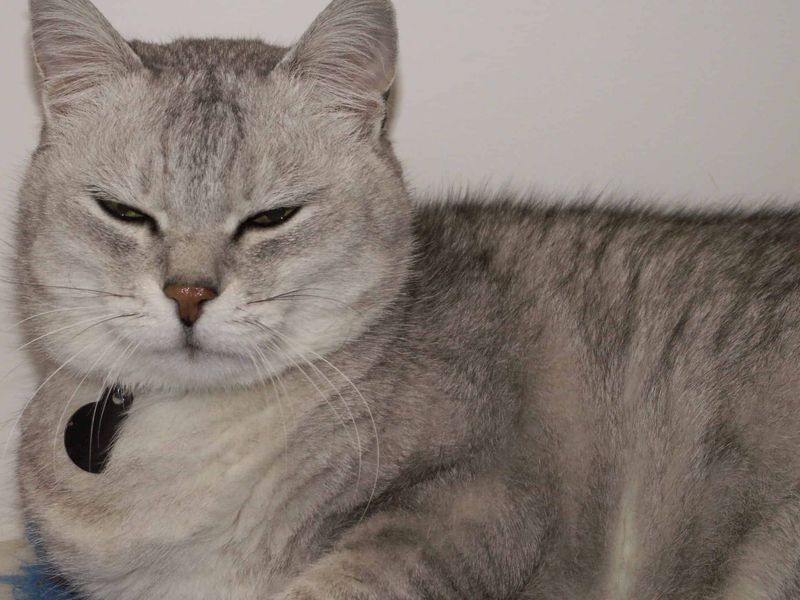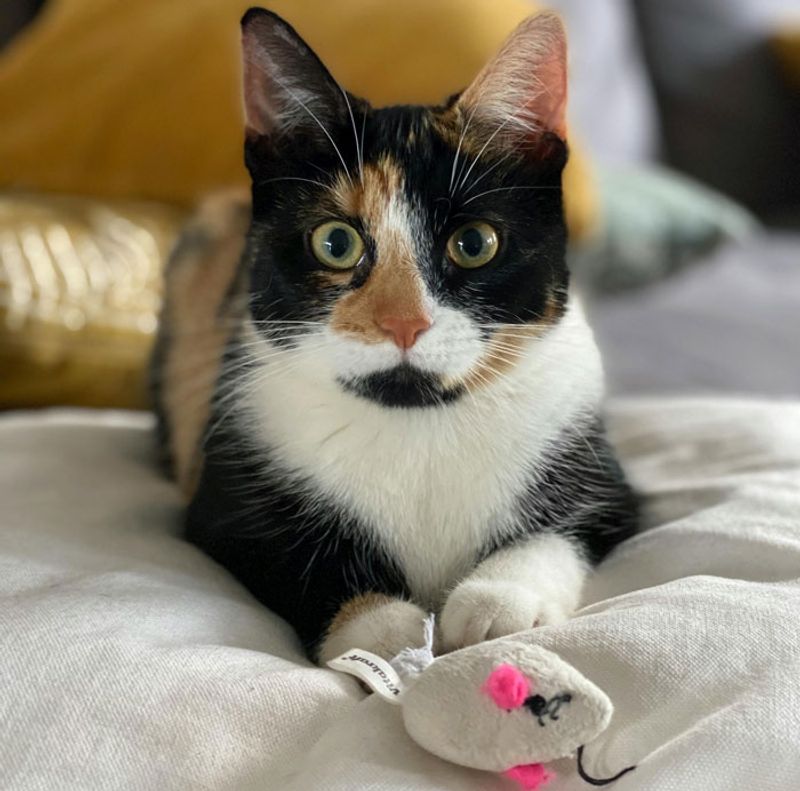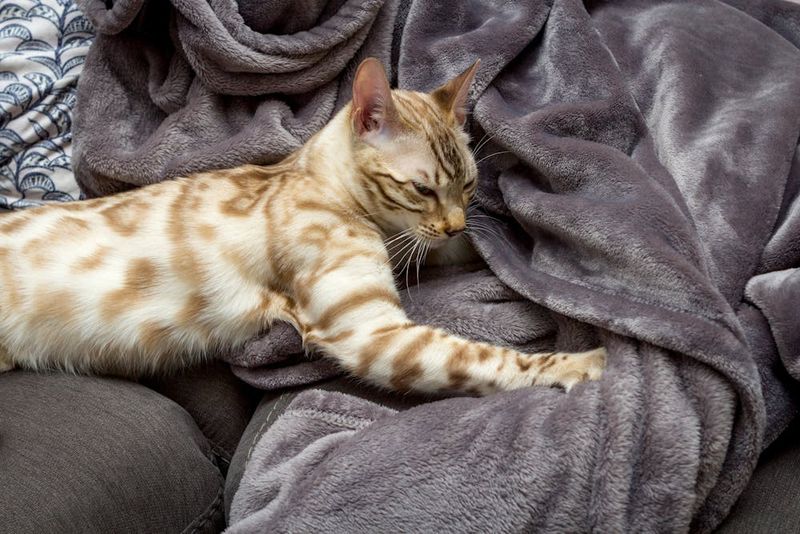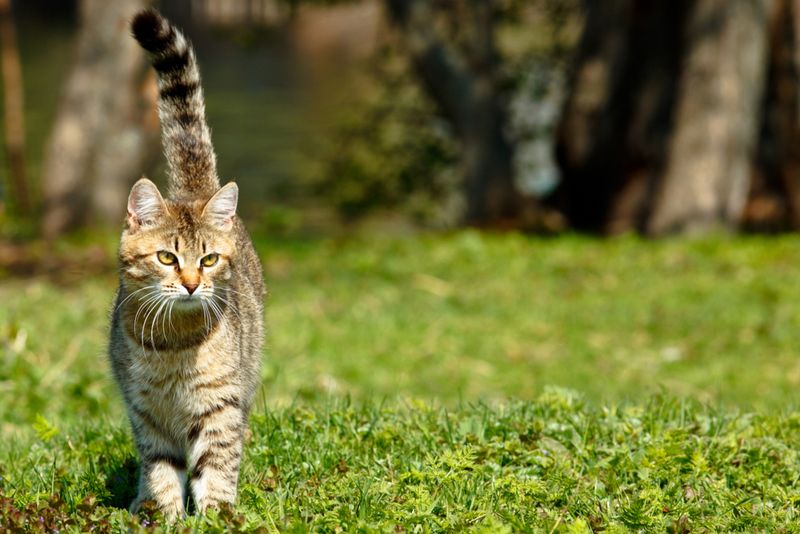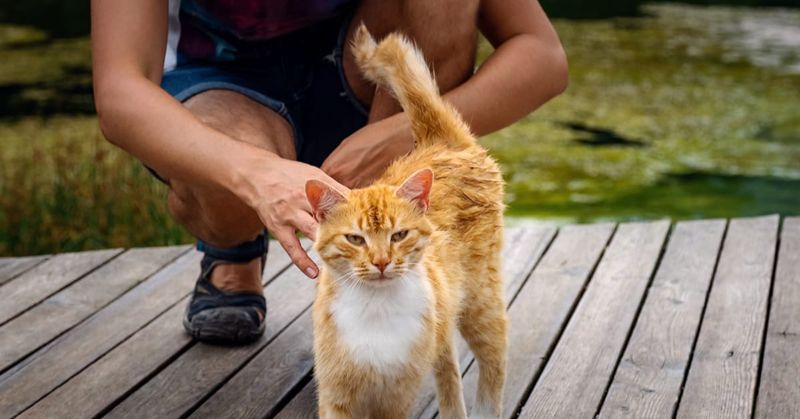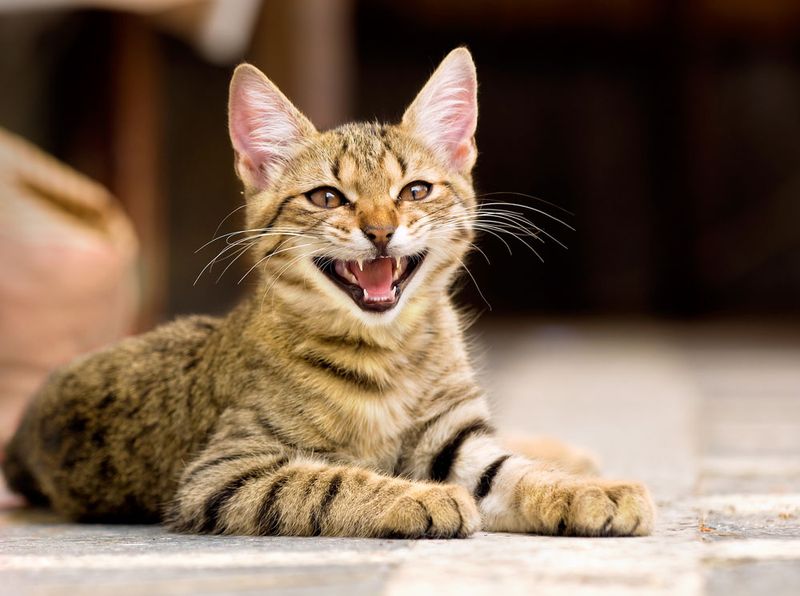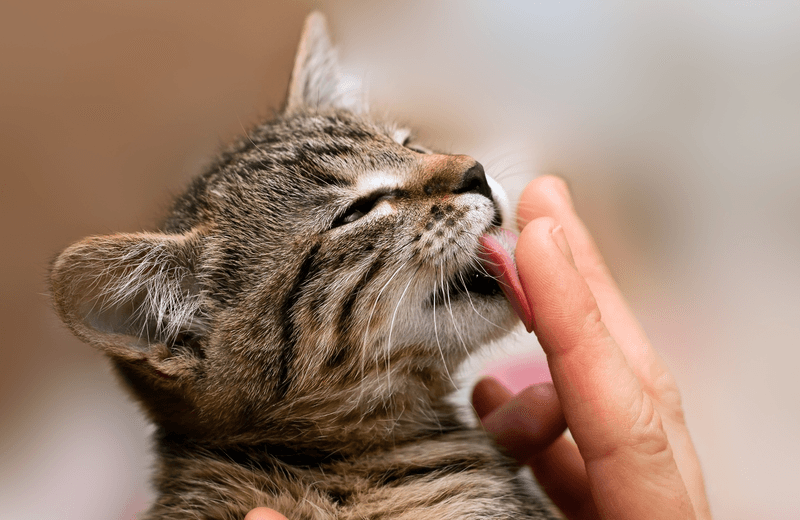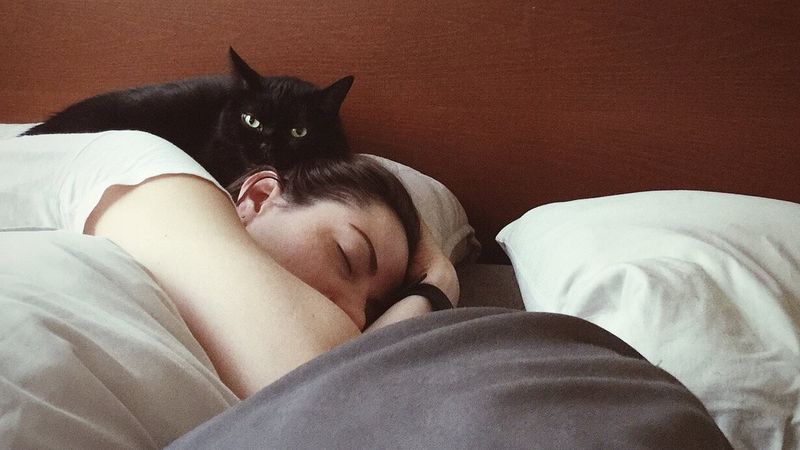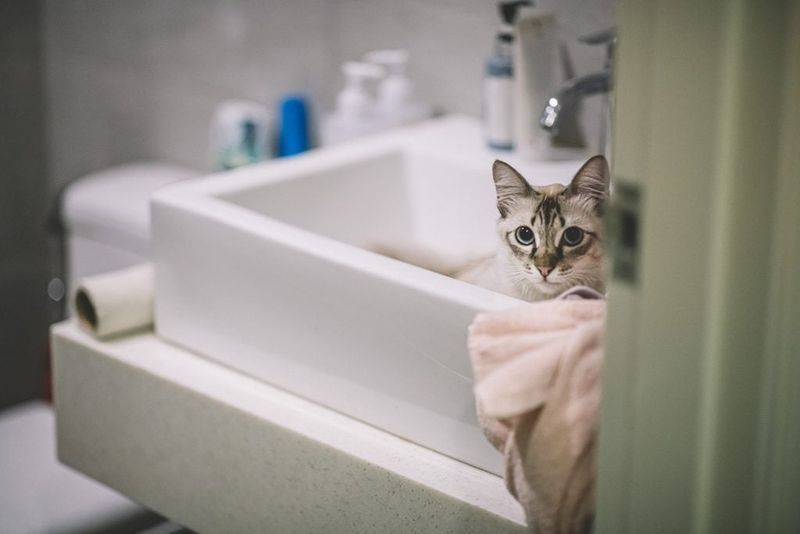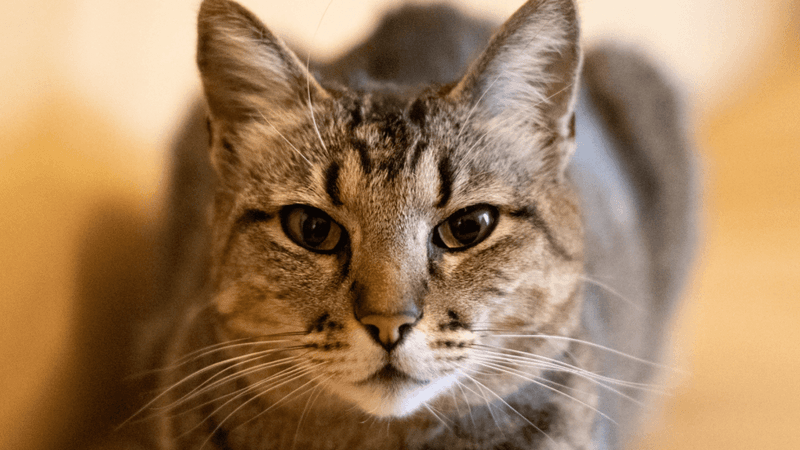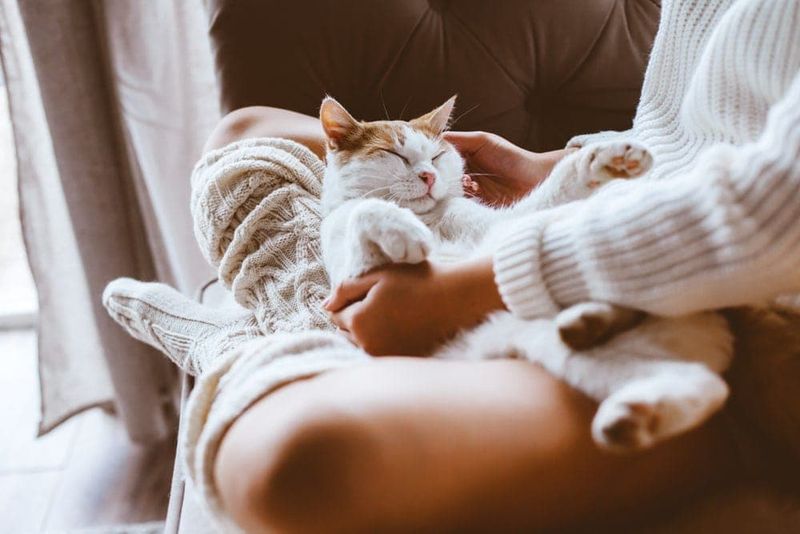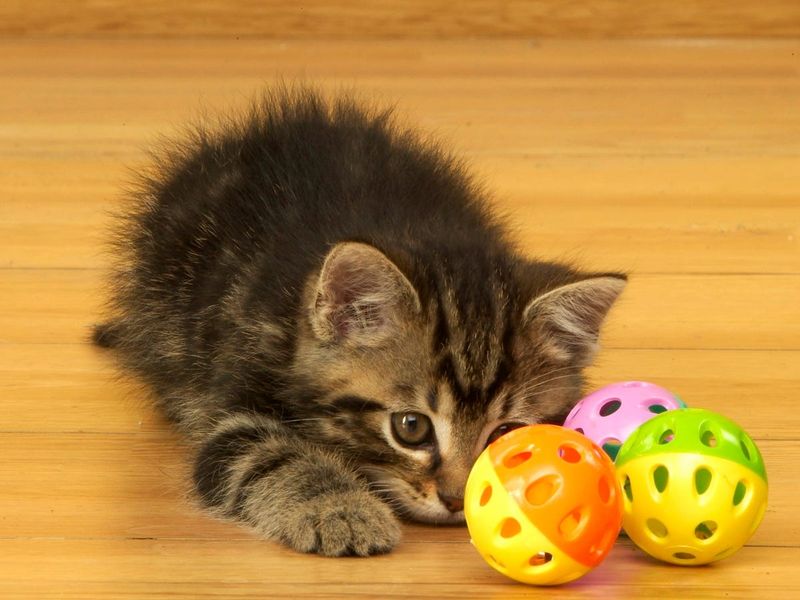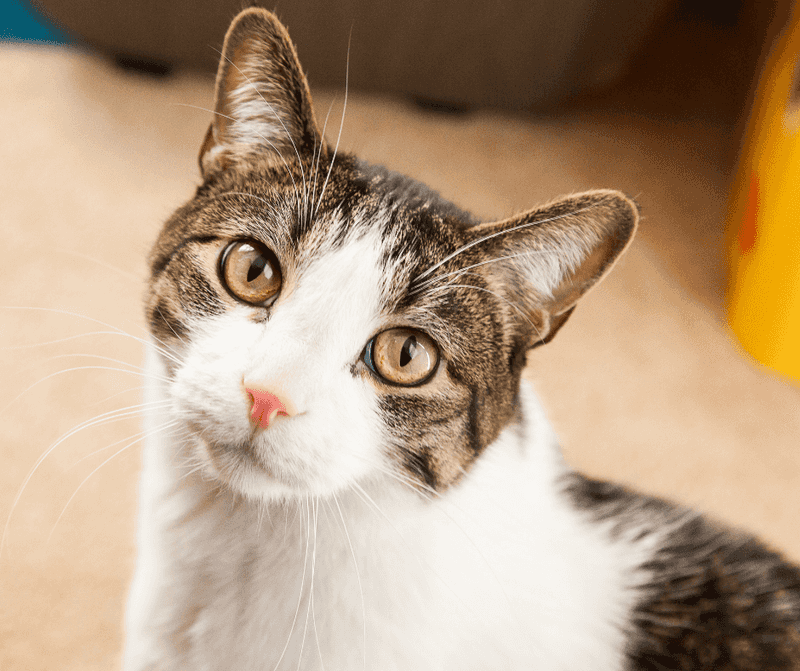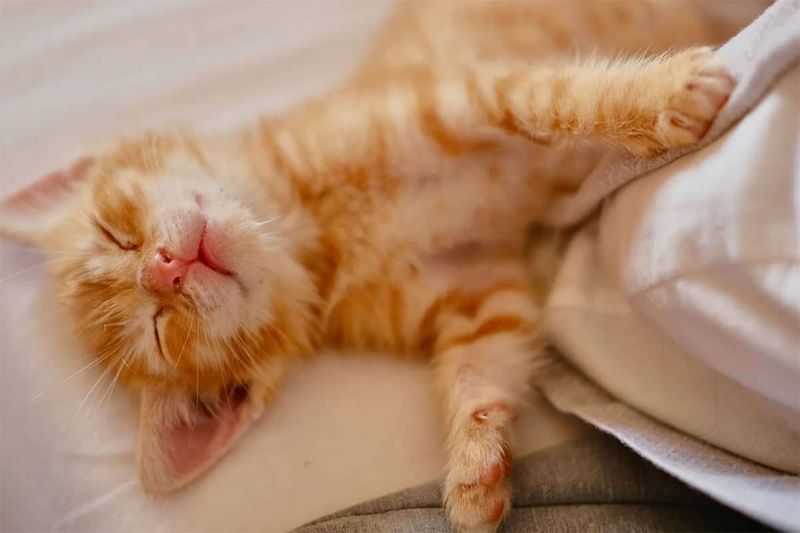📖 Table of Content:
- 1. Slow Blinking At You
- 2. Sleeping Belly-Up
- 3. Bringing You “Gifts”
- 4. Head-Bunting Against You
- 5. Kneading Without Claws
- 6. Greeting You With Upright Tail
- 7. Showing Their Back To You
- 8. Chirping Or Trilling At You
- 9. Grooming You
- 10. Sleeping Near Your Face
- 11. Following You To The Bathroom
- 12. Exposing Their Whisker Pads
- 13. Choosing Your Lap Over Warm Spots
- 14. Showing You Their Toys
- 15. Maintaining Eye Contact Without Tension
- 16. Sleeping Deeply In Your Presence
Cats express their emotions through subtle behaviors that often go unnoticed. These cues offer insight into their comfort and sense of security within their environment. Recognizing these signs can reveal much about a cat’s emotional state.
A feline that feels safe will show calm, relaxed body language and exhibit routines that signal trust. These actions go beyond the usual signs like purring or kneading. They are rooted in deep emotional comfort and familiarity with their surroundings.
By observing these behaviors, it’s possible to gauge how connected and content a cat truly is. Such understanding can contribute to a more fulfilling human-animal relationship. It also plays a key role in supporting a cat’s mental and emotional health.
1. Slow Blinking At You
Ever notice your cat gazing at you with half-closed eyes? This sleepy-looking blink is actually cat language for “I trust you completely.” Cats only close their eyes around beings they feel utterly safe with.
In the wild, closing eyes means vulnerability to attack, so when your cat slow blinks at you, they’re essentially saying they feel secure enough to let their guard down. Many cat behaviorists call this the “kitty kiss.”
Try responding with your own slow blink to communicate back. This simple exchange builds mutual trust and strengthens your bond, creating a special moment of connection between you and your feline companion.
2. Sleeping Belly-Up
A cat snoozing with their belly exposed represents the ultimate display of trust. The stomach area contains vital organs and is naturally the most vulnerable part of a cat’s body. When your feline friend sleeps this way, they’re essentially announcing they feel completely protected in your presence.
Wild cats and even outdoor pets rarely adopt this position, saving it exclusively for environments where they feel no threat exists. This position leaves them completely defenseless and unable to spring into action quickly.
Don’t mistake this invitation as a request for belly rubs, though! Most cats still prefer not to have their tummies touched, even when they feel secure enough to expose them.
3. Bringing You “Gifts”
Finding a toy mouse or, more alarmingly, an actual dead creature at your doorstep? Your cat isn’t being creepy – they’re showing profound emotional security through sharing. This hunting behavior demonstrates they view your home as their territory and you as part of their family unit.
In feline society, mothers teach kittens to hunt, and cats in colonies share catches. By bringing you these offerings, your cat is treating you as a valued member of their social group who deserves to share in their success.
While not the most pleasant gift exchange from our perspective, this behavior reveals your cat feels established enough in their relationship with you to share resources – a significant sign of trust.
4. Head-Bunting Against You
That forceful nudge your cat gives with their forehead isn’t just affection – it’s a territorial claim showing deep emotional security. When your cat bumps their head against you, they’re depositing scent from special glands located on their face, effectively marking you as “theirs.”
Only cats who feel firmly established in their environment perform this behavior. They’re essentially announcing to other animals that you belong to them and are part of their safe social circle.
The strength behind these head-bunts often surprises owners! Your cat pushes firmly because they’re confidently establishing a connection, not worried about rejection or negative consequences – a true sign they feel emotionally anchored with you.
5. Kneading Without Claws
The rhythmic pushing motion cats make with their paws – often called “making biscuits” – originates from kittenhood when they stimulated milk flow from their mother. When an adult cat kneads without extending their claws, they’re exhibiting extraordinary comfort and security.
Cats naturally extend their claws during kneading as a reflex, but those feeling especially secure often consciously retract them. This modification shows awareness of your comfort and indicates they’re not feeling any anxiety that might trigger defensive reflexes.
The gentle pressure and relaxed paw movement reveal your cat has entered a deeply content state, reminiscent of their earliest feelings of safety with their mother – now transferred to you.
6. Greeting You With Upright Tail
A straight-up tail with a soft curve at the top is one of the clearest signs of a cat’s happiness. This gesture, often seen when someone returns home, reflects emotional comfort and a strong bond. It silently communicates joy and trust.
This greeting originated as kitten behavior toward mother cats and is reserved exclusively for those your cat considers family. Cats meeting strangers or feeling uncertain keep their tails in more guarded positions.
The upright tail posture leaves cats physically vulnerable, showing they feel no need for defensive body language in your presence. This unguarded greeting means your cat feels consistently safe enough to celebrate your return openly.
7. Showing Their Back To You
What may look like a cold shoulder from a cat is often a subtle sign of comfort and confidence. Turning away exposes an area that’s difficult to protect, showing the cat doesn’t view the situation as threatening. It’s a quiet, instinctive expression of trust.
When your feline friend sits with their back to you, they’re demonstrating they don’t need to keep you in their sightline. They’re confident enough in your relationship to believe no harm will come from behind.
This behavior appears frequently during relaxation times, like when you’re reading or watching TV. Your cat positioning themselves with their back to you while remaining in your company shows they feel protected in your presence.
8. Chirping Or Trilling At You
Those musical, rolling sounds your cat makes – not quite a meow but more melodic – are special vocalizations reserved for positive social interactions. Mother cats use these sounds to communicate with kittens, and adult cats save them for those they feel emotionally bonded with.
Unlike defensive hisses or demanding yowls, chirps and trills are conversational in nature. Your cat is essentially saying hello and expressing pleasure at your presence or inviting interaction in a friendly way.
These sounds are rarely directed at strangers or in tense situations, making them reliable indicators of comfort. When your cat chirps at you throughout the day, they’re engaging in social communication from a place of security.
9. Grooming You
When your cat licks your hand or hair, they’re not just tasting your skin products. This behavior, called allogrooming, represents one of the highest forms of trust in the feline world. Cats only groom individuals they consider part of their inner social circle.
In feline colonies, mutual grooming occurs between cats who share strong bonds and trust. By extending this behavior to you, your cat is treating you as a fellow cat they feel responsible for keeping clean and cared for.
The grooming might feel rough due to their sandpaper-like tongues, but the sentiment behind it is gentle. Your cat is investing energy in maintaining your relationship, showing they feel secure enough to form a deep social bond.
10. Sleeping Near Your Face
Finding your cat curled up near your head while you sleep indicates profound emotional security. The head area is where humans exhale the most breath and emit the strongest personal scent, making it the most identifiable “you” part of the bed.
By choosing this location, your cat is deliberately surrounding themselves with your scent, finding comfort in your distinct smell. This position also allows them to detect your breathing patterns, which provides reassurance of your presence even while they sleep.
Many cats specifically select the pillow area despite having the entire bed available, showing this isn’t random positioning. Your cat is actively seeking closeness to the most personal part of you, demonstrating deep attachment.
11. Following You To The Bathroom
Your cat’s seemingly awkward bathroom surveillance actually reveals a significant emotional attachment. Bathroom visits make humans temporarily vulnerable – seated or occupied with tasks – and cats instinctively recognize this vulnerability requires protection.
In the wild, animals are most susceptible to predators during elimination. Your cat’s bathroom shadowing shows they’ve appointed themselves your personal bodyguard during these moments, feeling secure enough in their territory to offer protection rather than seeking it.
This behavior also demonstrates they prioritize maintaining proximity over their own comfort, willing to enter small, sometimes steamy rooms just to keep you company. Far from being intrusive, your bathroom buddy is showing devoted guardianship from a place of security.
12. Exposing Their Whisker Pads
Relaxed whiskers and a soft, open expression on a cat’s face suggest comfort and emotional security. This part of the face plays a vital role in detecting movement and assessing surroundings. When a cat exposes it without tension, it’s placing full trust in its environment.
When your cat extends their face toward you with whiskers in a neutral position, they’re deliberately making their sensory equipment vulnerable. This position leaves them temporarily less able to detect sudden movements or changes in their environment.
Cats only expose these sensitive areas when they’re confident no harm will come to them. Your feline companion offering their whisker pads for scratches or pushing against your hand shows they’ve categorized you as a source of safety rather than potential danger.
13. Choosing Your Lap Over Warm Spots
While heat-seeking by nature, cats often seek out sunny spots, heating vents, or even warm laptops. If a lap becomes their preferred resting place, it reflects something deeper than comfort. It’s a sign of emotional closeness and trust.
This preference reveals they value closeness to you more than optimal temperature, a significant choice for creatures who typically make practical decisions about their resting places. Your lap might not always be the warmest option, but it provides something more valuable – emotional security.
The weight of this choice becomes even more apparent during summer months when your body heat might actually make them warmer than comfortable. Yet many secure cats continue seeking laps year-round, showing their attachment transcends physical comfort.
14. Showing You Their Toys
A cat prancing toward you with a toy in its mouth, then dropping it nearby without fully relinquishing it, is engaging in an often-misunderstood social behavior. This isn’t merely a request to play – it’s an invitation to participate in their world.
Secure cats share prized possessions with those they trust, similar to how they might bring “gifts” but with objects they value for entertainment rather than nutrition. The key distinction is their tendency to stay engaged with the toy rather than simply delivering it.
By bringing these objects into your shared space, they’re creating a communal play zone where both of you belong. This behavior indicates they view you as a playmate worthy of sharing their favorite things with – a privilege granted only to those they feel completely comfortable around.
15. Maintaining Eye Contact Without Tension
Among cats, prolonged eye contact is usually associated with dominance or conflict, so it’s rarely sustained. When a cat holds a gentle gaze with soft eyes and relaxed posture, it’s an exception to this rule. This calm eye contact reflects deep trust and emotional security.
This behavior represents a learned override of natural instincts. Your cat has discovered through experience that meeting your gaze doesn’t lead to threat or competition, allowing them to rewrite their instinctual response specifically for you.
The relaxed gaze often accompanies other comfort signals like slow blinking or soft facial expressions. This willingness to engage in what would normally be threatening behavior between cats shows they’ve created a special category of interaction just for their human relationship.
16. Sleeping Deeply In Your Presence
The distinction between light dozing and genuine deep sleep reveals volumes about your cat’s emotional state. When truly secure, cats enter REM sleep characterized by twitching whiskers, fluttering eyelids, or even soft sleep-vocalizations – states of complete vulnerability impossible to maintain while feeling threatened.
Most cats in new environments or around unfamiliar people only achieve light sleep, remaining partially alert to potential dangers. A cat willing to enter deep sleep cycles in your presence has made a subconscious evaluation that no threats exist that require vigilance.
This behavior is particularly meaningful because it’s entirely involuntary – cats cannot consciously decide to enter deep sleep. Your presence has been so consistently safe that their nervous system automatically permits complete relaxation, the ultimate vote of confidence from a naturally cautious species.
